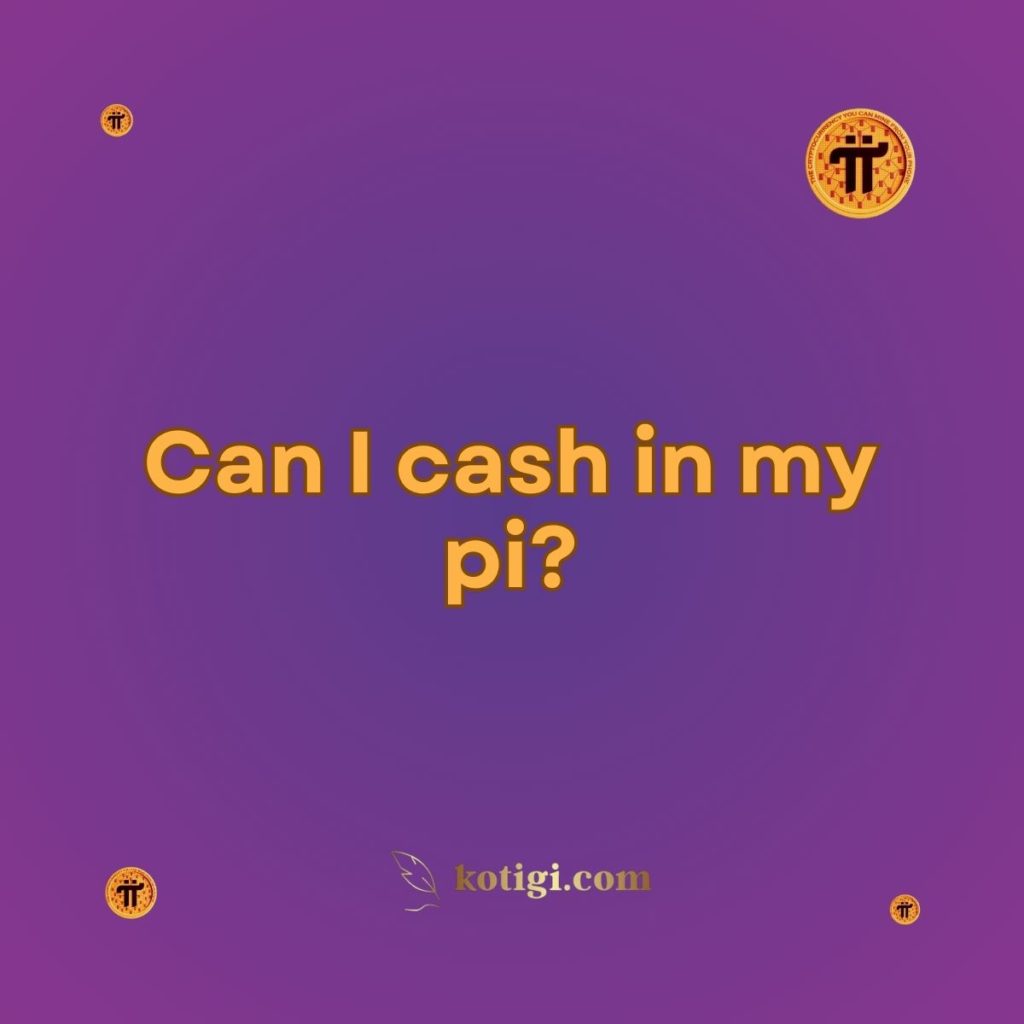
Can I cash in my pi?
As of now, you cannot cash in Pi coins because Pi Network is in its enclosed mainnet phase. Pi coins are not yet listed on cryptocurrency exchanges, meaning they cannot be traded for fiat currency or other cryptocurrencies. The ability to cash in Pi will depend on the project’s future developments, including the transition to an open mainnet and listing on exchanges.
Introduction
Pi Network has attracted significant attention due to its innovative approach to cryptocurrency mining via mobile phones. With millions of users mining Pi coins, many are eager to understand how they can convert their Pi into real money. Currently, cashing in Pi coins is not possible due to the project’s status and the lack of official trading platforms. This article explores the current limitations, the process needed for Pi to become cashable, and the factors influencing its future in the financial markets.
Current Status of Pi Network
Enclosed Mainnet Phase
Pi Network is currently in its enclosed mainnet phase. During this phase, Pi coins are mined and accumulated by users but cannot be traded or exchanged for fiat currency or other cryptocurrencies. The enclosed mainnet allows the development team to focus on network stability, security, and building the infrastructure necessary for the open mainnet launch.
Lack of Exchange Listings
One of the key factors preventing users from cashing in their Pi coins is the absence of listings on cryptocurrency exchanges. Without being listed on major exchanges, Pi coins have no official market value and cannot be exchanged for traditional currencies. Exchanges provide the platform for trading cryptocurrencies and setting market prices, and Pi coins need to be listed to enable such transactions.
Internal Transactions
Within the Pi Network, users can transfer Pi coins to other members of the network for various purposes. However, these transactions are limited to the enclosed ecosystem and do not involve real-world currency exchanges. The ability to cash in Pi coins will only become available once the project transitions to an open mainnet and is listed on exchanges.
Steps Needed for Pi to Become Cashable
Transition to Open Mainnet
The most significant step for Pi coins to become cashable is the transition from the enclosed mainnet to an open mainnet. The open mainnet will allow Pi coins to be listed on cryptocurrency exchanges, where they can be traded for fiat currency or other cryptocurrencies. This transition involves completing the development of the network’s infrastructure, addressing security concerns, and ensuring regulatory compliance.
Listing on Cryptocurrency Exchanges
Once Pi Network moves to an open mainnet, the next crucial step is listing Pi coins on reputable cryptocurrency exchanges. Exchanges like Binance, Coinbase, and Kraken provide liquidity and facilitate the trading of cryptocurrencies. The Pi Network team has indicated plans to list Pi coins on exchanges once the open mainnet is operational. Exchange listings will enable users to convert their Pi coins into real money by trading them on these platforms.
Market Demand and Adoption
For Pi coins to gain real value and become cashable, there must be sufficient market demand and adoption. Factors influencing demand include the coin’s utility, adoption by businesses and consumers, and overall market sentiment. The Pi Network team is working on building a functional ecosystem with dApps and marketplaces where Pi can be used. Increased adoption and use cases will drive demand and potentially impact the coin’s value.
Regulatory Compliance
Compliance with regulatory requirements is essential for Pi Network to achieve broader acceptance and facilitate cashing in Pi coins. Cryptocurrency exchanges operate under various regulatory frameworks, and Pi Network must ensure it meets these requirements before its coins can be listed. Addressing regulatory concerns will be crucial for the successful transition to an open mainnet and achieving market acceptance.
Potential Challenges in Cashing in Pi
Security Concerns
The transition from an enclosed mainnet to an open mainnet involves addressing various security concerns. Ensuring the security of the Pi Network’s blockchain and protecting against potential vulnerabilities will be critical. Any security issues could impact the coin’s credibility and hinder its ability to be traded and cashed in.
Market Volatility
Once Pi coins are listed on exchanges, their value may be subject to market volatility. Cryptocurrency prices can fluctuate significantly based on market conditions, demand, and investor sentiment. Users should be prepared for potential price swings and understand that the value of their Pi coins could vary widely.
Adoption and Use Cases
The value and liquidity of Pi coins will depend on their adoption and use in real-world applications. If Pi Network succeeds in creating a functional ecosystem with widespread adoption, it will enhance the coin’s value and usability. However, if adoption is slow or limited, it may impact the coin’s market performance and the ability to cash in.
Regulatory Hurdles
Navigating regulatory requirements can be challenging for any cryptocurrency project. Pi Network will need to address regulatory concerns and comply with relevant laws and regulations to facilitate the trading and cashing in of its coins. Delays or complications in meeting regulatory standards could impact the timeline for cashing in Pi.
How to Prepare for Cashing in Pi?
Stay Informed About Developments
To be ready for when Pi coins become cashable, stay informed about the network’s developments and updates. Follow official announcements from the Pi Network team regarding the transition to an open mainnet, exchange listings, and other relevant news. Being aware of these updates will help you prepare for when Pi coins can be traded and converted into real money.
Understand Market Dynamics
Familiarize yourself with cryptocurrency market dynamics, including factors that influence coin values and trading practices. Understanding how market conditions affect cryptocurrency prices will help you make informed decisions about when and how to cash in your Pi coins.
Engage with the Community
Participate in the Pi Network community to stay connected with other users and gain insights into the latest developments. Engaging with the community can provide valuable information and support as you navigate the process of cashing in your Pi coins.
Plan for Volatility
Be prepared for potential price volatility once Pi coins are listed on exchanges. Cryptocurrency markets are known for their fluctuations, and it is important to have a plan in place for managing price changes and making informed trading decisions.
Conclusion
As of now, cashing in Pi coins is not possible due to Pi Network’s status in the enclosed mainnet phase and the lack of exchange listings. For Pi coins to become cashable, the project must transition to an open mainnet, secure listings on major cryptocurrency exchanges, and achieve significant market adoption. Users should stay informed about the network’s progress and prepare for potential challenges, including security concerns, market volatility, and regulatory hurdles. By understanding the steps needed and staying engaged with the Pi Network community, you can be ready for when Pi coins become tradable and convertible into real money.
Key Takeaways:
- Pi coins cannot currently be cashed in due to the enclosed mainnet phase and lack of exchange listings.
- Transitioning to an open mainnet and listing on exchanges are crucial steps for making Pi coins cashable.
- Market demand, regulatory compliance, and the development of a functional ecosystem will impact the ability to cash in Pi coins.
- Users should stay informed about Pi Network’s developments, understand market dynamics, and prepare for potential challenges.
- Engaging with the Pi Network community and planning for volatility will help in managing the process of cashing in Pi coins.





